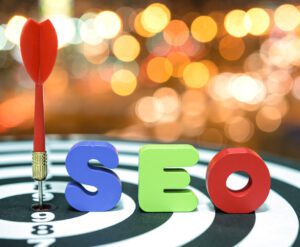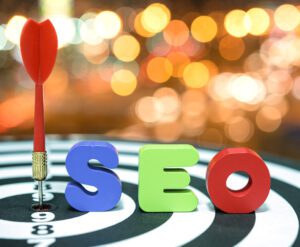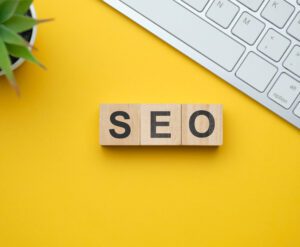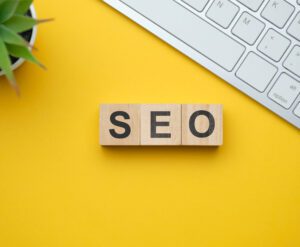Innovations in the digital marketing realm continue to advance rapidly, providing marketers with new possibilities and tools to reach customers in more profound and memorable ways. Augmented Reality (AR) and Virtual Reality (VR) are innovative technologies in marketing campaigns. They have revolutionized how businesses engage with customers, create brand awareness, and enhance customer experiences. AR and VR provide an immersive experience enabling customers to interact with a product or service, explore its features, and make informed purchase decisions. This article will explore how AR and VR are used in marketing campaigns and their impact on businesses.
Augmented Reality is a technology that superimposes digital information on the physical environment. It can be used with smartphones, computers, or special augmented reality devices like glasses or headsets. It can be used to create interactive experiences that provide customers with new ways to interact with products. Using AR, a furniture store, for instance, can enable customers to visualize how furniture would appear in their home before purchasing. This technology can provide product information, demonstrate how products function, and even produce immersive video games.
Conversely, Virtual Reality creates an entirely immersive, computer-generated environment where users can interact. It can be viewed with VR devices that provide a 360-degree field of view. VR can create unique experiences that transport consumers to new environments. For instance, a travel agency could use VR to allow customers to look into a destination before booking a trip, or a car manufacturer could let customers virtually test-drive a new vehicle.
Augmented Reality (AR) in Marketing Campaigns
Augmented Reality has the most significant impact on digital marketing among the various forms of extended reality. The general public has easy access to augmented reality. AR experiences are accessible to anyone with a proficient smartphone or tablet (most Apple and Android devices). The user points their device’s camera at an augmented reality QR code or trigger, and the experience automatically launches.
Augmented Reality technology superimposes computer-generated images or information onto the user’s real-world view. This technology has been used in various marketing campaigns to create interactive experiences that enhance customer engagement and increase brand awareness. Some of the common uses of AR in marketing campaigns include:
Product Demonstrations
AR enables businesses to create interactive product demonstrations that give customers a detailed view of the product’s features and functionalities. For instance, IKEA’s AR app enables customers to visualize how a piece of furniture would look in their home before purchasing it. Similarly, cosmetics brands such as L’Oreal and Sephora have developed AR apps that allow customers to try makeup virtually, providing an engaging and fun shopping experience.
Interactive Print Ads
AR technology has also created interactive print ads that provide customers with additional information about a product or service. For instance, National Geographic’s AR print ad for the TV series “Genius” allowed readers to scan it with their smartphones and access an interactive 3D model of Albert Einstein’s face.
Location-Based AR Campaigns
Location-based AR campaigns enable businesses to create interactive experiences specific to a particular location. For instance, in 2017, McDonald’s launched an AR campaign in the UK that transformed their Happy Meal boxes into AR game pieces. Customers could scan the boxes with their smartphones and play an interactive AR game.
Virtual Reality (VR) in Marketing Campaigns
Virtual Reality (VR) uses devices like VR headsets to give users a completely immersive digital experience. AR combines digital elements with our natural surroundings. VR, on the other hand, lets us replace our natural world with a virtual one. VR has applications in healthcare, entertainment, automobiles, education, and many other industries. However, its potential applications are virtually limitless.
VR technology enables users to experience a computer-generated environment that simulates a real-world environment. VR has been used in various marketing campaigns to provide customers with an immersive experience that enhances brand awareness and increases customer engagement. Some of the common uses of VR in marketing campaigns include:
Virtual Reality in the automotive industry.
With the help of VR technology, customers can take virtual tours of goods or services to learn more about their features and functions. These gadgets enter the automobile industry at two distinct points: the design phase and the point of sale. In both situations, it is advantageous for the parties involved to be able to visualize the product without actually possessing it.
Ford has recently revamped their design process to replace 2D illustrations with 3D VR models, while companies like Jaguar have been using VR to create automobile prototypes for over a decade. This allows automakers to reduce design time and administrative expenses. Other automobile giants, such as Mercedes-Benz, Audi, and Volkswagen, have followed Harley-Davidson’s lead by allowing potential customers to sit virtually inside the vehicle they want to buy and perform virtual test drives.
Virtual Reality in Psychology and mental health.
As more attention is paid to mental health, more resources are made available to medical professionals to assist them in treating patients. VR has emerged as a therapy for post-traumatic stress disorder. People engage in a virtual reality reenactment of the traumatic incident to reconcile with the memory and start healing.
Similarly, VR can address mental health conditions such as anxiety and depression. It allows patients to confront their issues in a virtual setting without coming into contact with the things they fear.
Virtual Reality in the sports industry.
Many athletes now use Virtual Reality to improve their performance on the field. VR is primarily used as a golf, athletics, football, and cycling training device. It can assess an athlete’s technique and overall performance to enhance their skills. It allows coaches and participants to recreate previous scenarios in order to learn from them virtually. In addition, NASCAR drivers and professional soccer teams are utilizing virtual reality to retrace their mistakes in games.
VR can also be used to design more efficient and effective sports equipment. By utilizing technology to examine the stress patterns and durability of sporting equipment, companies can create products that better meet the requirements of athletes.
Brand Activations and virtual tour
VR technology has also created brand activations that provide customers with an immersive experience that promotes a brand’s values and vision. For instance, in 2018, the Coca-Cola Company launched a VR campaign that enabled customers to experience a virtual winter wonderland and interact with the brand’s polar bear mascots. Samsung launched a VR campaign that gave customers a virtual tour of their new product lineup, including the Galaxy S9 and S9+.
AR and VR’s advantages for marketing campaigns.
In recent years, Augmented Reality (AR) and Virtual Reality (VR) have gained much popularity in marketing. Both technologies have the potential to enhance the customer experience and increase engagement with a brand. Using AR and VR in marketing campaigns can have multiple advantages. First, they provide a different experience, distinguishing a brand from its competitors. In addition, they can nurture emotional connections with customers and brand loyalty. Moreover, AR and VR experiences can be shared on social media, giving the brand additional exposure.
However, some challenges are associated with using AR and VR in marketing campaigns. For one, creating AR and VR experiences can be costly and time-consuming. Additionally, not all consumers can access the hardware to experience AR and VR content. There is also the risk of creating an experience that is too gimmicky or irrelevant to the brand, which can negatively impact brand perception.
Despite these challenges, the use of AR and VR in marketing campaigns is on the rise. As technology becomes more accessible, more brands will likely experiment with these immersive experiences. The potential benefits are significant for companies willing to invest in creating high-quality AR and VR experiences. By providing unique, immersive experiences, companies can set themselves apart from the competition and create lasting connections with customers.








